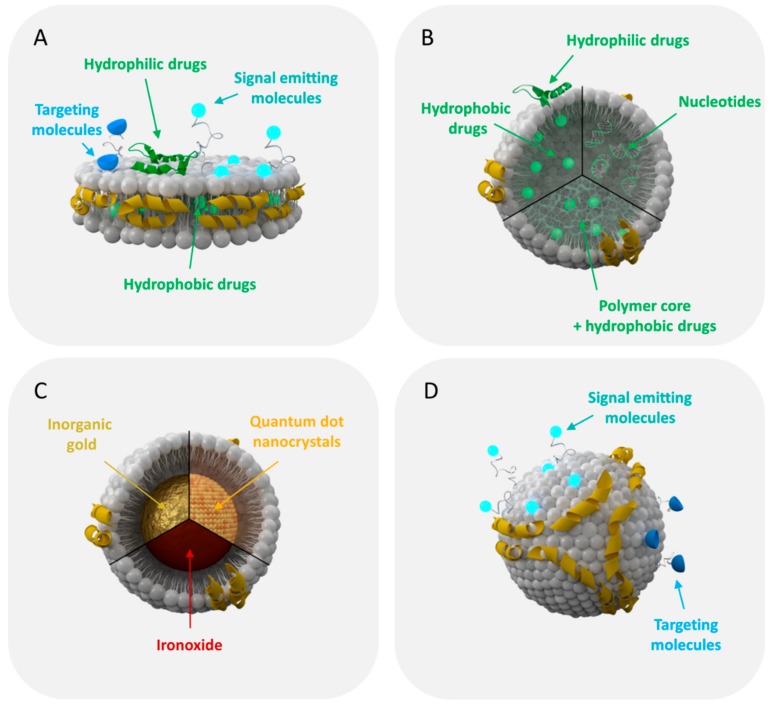Figure 3.
Schematic presentation of the rHDL nanoparticle platform currently explored for drug delivery and imaging. (A) apo-AI and phospholipid molecules self-assemble to form rHDL nanodiscs, which can be adapted as multifunctional nanocarrier for drug delivery or imaging. (B) Spherical rHDL particles can be loaded with hydrophilic/hydrophobic drugs or oligonucleotides to be used as nanotherapeutics. (C) rHDL can be built with an inorganic core of varying size for medical imaging and diagnosis. (D) The surface of rHDL can be modified with signal emitting dyes for optical, nuclear, or magnetic resonance imaging. Targeting ligands like antibodies or proteins can coupled to the surface of the particle to redirect rHDL to receptors/biomarkers other than their natural ones.

